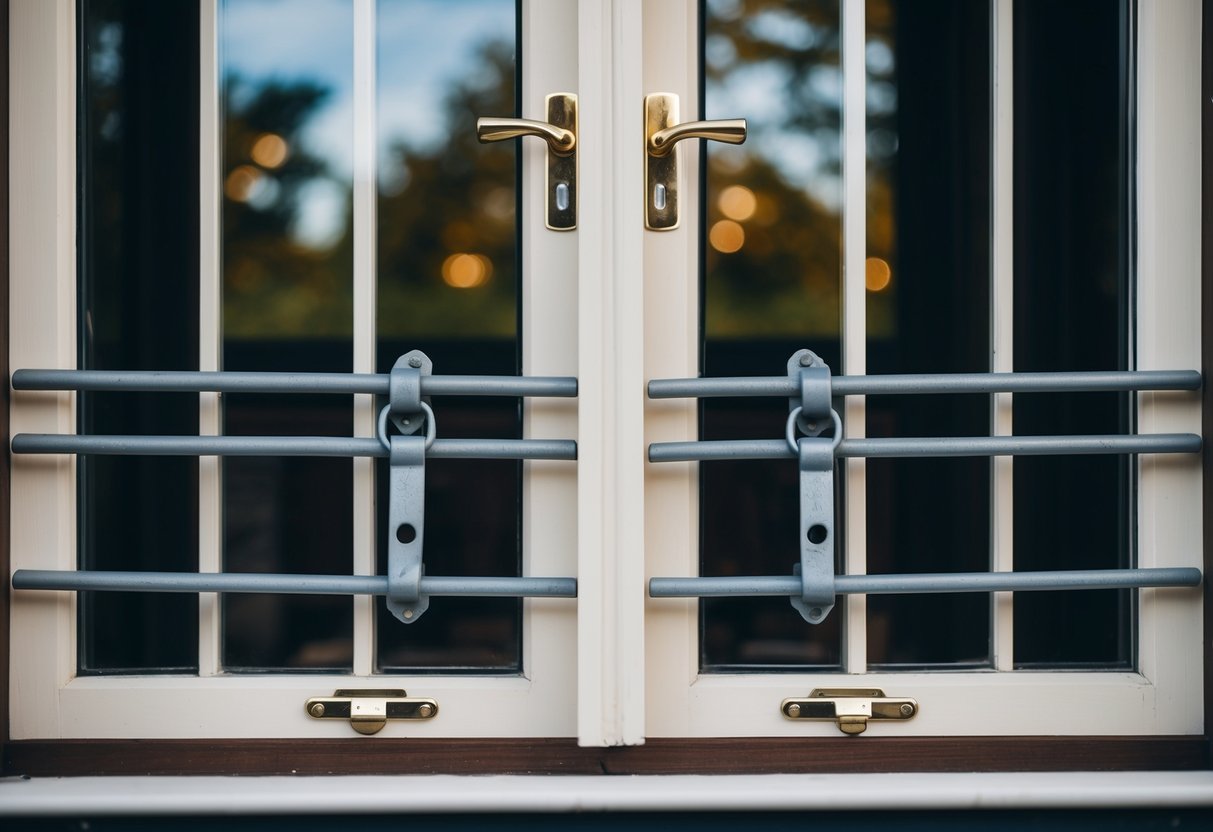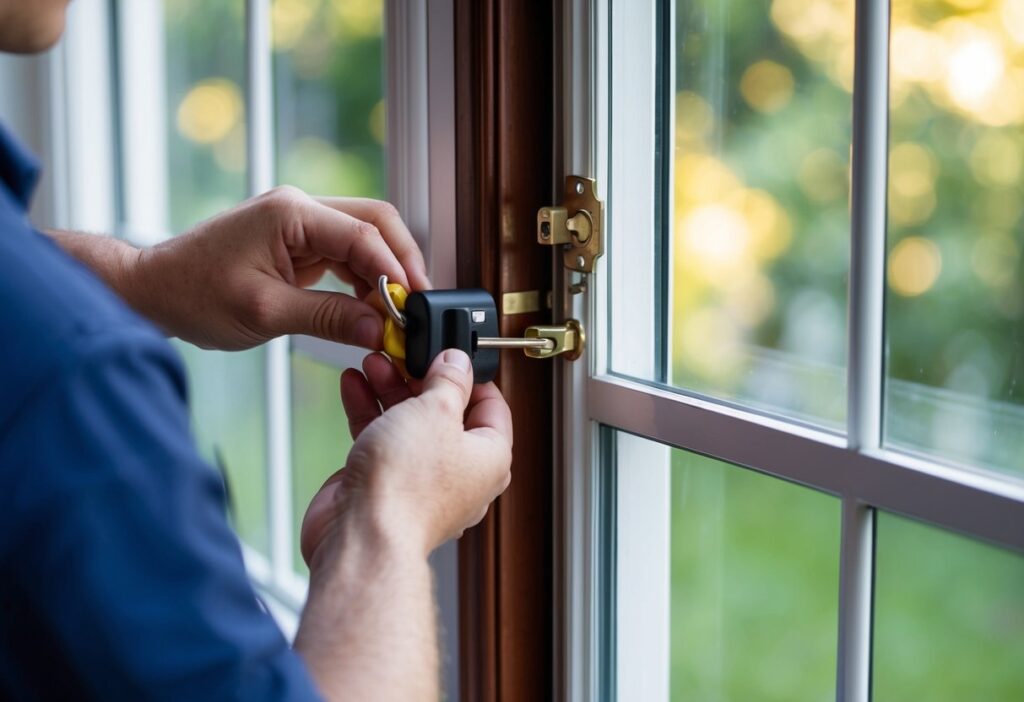Sash windows add elegance to homes, but they can be a weak spot for security if not properly protected. Burglars often target these classic windows as entry points. Here’s How to Keep Your Sash Windows Secure – in short, install locks, add window restrictors, and consider reinforced glass or alarms.

Simple steps can make a big difference in safeguarding your property. Clean windows regularly to spot any damage quickly. Use key-operated locks or slide bolts to prevent the sashes from being opened. Window restrictors allow for ventilation while limiting how far the window can open.
For extra protection, think about upgrading to toughened glass or adding window alarms. These measures help deter intruders and give you peace of mind. With the right security in place, you can enjoy the beauty of sash windows without worrying about home safety.
Understanding Sash Windows and Potential Security Risks

Sash windows are a classic feature in many homes, but they can pose security risks if not properly secured. If you need to know How to Keep Your Sash Windows Secure, then nowing how these windows work and their weak points is key to protecting your property.
The Anatomy of Sash Windows
Sash windows have two movable panels called sashes. These slide up and down in tracks on the side of the window frame. The sashes are held in place by counterweights hidden in pockets on each side.
Most sash windows have:
- Top and bottom sashes
- Pulleys and cords
- Sash weights
- Meeting rails where the sashes join
- Parting beads to separate the sashes
Older sash windows often use single-pane glass. This can be a weak point for break-ins. Modern versions may have double-glazing for better security and insulation.
Identifying Common Security Weaknesses
Traditional sash windows can have several weak spots that burglars might try to exploit.
Weak locks are a major issue. Many old sash windows only have simple catch locks that are easy to force open from outside.
Rotting wood frames are another problem. They can allow intruders to pry the window open more easily.
Large gaps between the sashes and frame are risky too. Thieves might try to slip tools in to unlock the window.
Other weak points include:
- Thin glass panes
- Poorly fitted sashes
- Worn-out sash cords
Checking these areas can help you spot and fix security risks in your sash windows.
Securing Sash Windows with Locks and Restrictors

Sash windows can be made much safer with the right locks and restrictors. These devices help prevent break-ins and accidents.
Types of Sash Window Locks
Sash window locks come in several styles. The most common are pivot catches and finger screw catches.
Pivot catches are small metal latches on the window frame. They hold the sash in place and let it pivot open for air. But worn pivot catches may not secure windows well.
Finger screw catches use a screw to tighten the sashes together. They’re simple but effective. You can easily lock or unlock them as needed.
Some locks fit between the sashes to stop them sliding. Others attach to the sides and grip the frame when closed.
For extra security, fit locks at the top and bottom of sashes. This makes it harder to force windows open from outside.
Installing Opening Restrictors for Enhanced Safety
Window restrictors limit how far sashes can open. This helps stop falls and makes it harder for burglars to climb in.
Most restrictors are metal bars or cables. They attach to the frame and sash. You can set them to allow some opening for fresh air.
Some types let you fully open windows when needed. But they snap back into place to limit opening next time.
Fit restrictors high up, out of children’s reach. Check they’re strong enough to withstand force.
Always follow maker’s guides when fitting restrictors. Poor installation can make them less effective.
The Benefits of Double Glazing
Double glazing adds another layer of security to sash windows. It uses two panes of glass with a gap between.
This makes windows harder to break. Intruders can’t easily smash through two layers of glass.
The gap also improves insulation. Your home stays warmer in winter and cooler in summer.
Double glazing cuts outside noise too. This is great if you live on a busy road.
You can get double glazing that looks like old single-pane windows. This keeps the classic sash window style.
Some firms can add double glazing to existing sash windows. Others replace the whole window unit.
Comprehensive Sash Window Security Measures

Securing sash windows involves multiple layers of protection. Strong hardware, electronic monitoring, and physical barriers work together to deter intruders and keep homes safe.
Additional Security Hardware Options
Sash stops are small metal devices that limit how far a window can open. They allow ventilation while preventing full access. Window bars or grilles add a visible deterrent. These can be decorative or plain, fixed or removable.
Reinforced locks boost security. Multi-point locking systems secure the sash at several points along the frame. Key-operated locks offer extra protection.
Sash window restrictors prevent the window from opening fully. This stops children from falling out and makes it harder for burglars to enter.
Utilising Security Cameras and Sensors
Window sensors alert homeowners if a sash is opened. They connect to home security systems or smartphones. Some trigger alarms, while others send silent alerts.
Security cameras near sash windows act as deterrents. They also capture evidence if a break-in occurs. Modern cameras offer HD video and night vision.
Motion-activated lights paired with cameras startle intruders. They turn on when movement is detected near windows.
Smart home systems can integrate window sensors, cameras, and lights. This creates a comprehensive security network.
Protective Window Films and Glass Treatments
Security film makes glass harder to break. It holds shattered glass together, slowing down intruders. The film is clear and doesn’t change the window’s look.
Laminated glass sandwiches a tough plastic layer between two panes. This makes it very hard to break through.
Frosted or patterned films add privacy. They let light in but stop people from seeing inside. This deters opportunistic thieves.
Some films block UV rays. This protects furnishings from sun damage while adding a layer of security.
Maintaining Sash Windows for Long-Term Security

Regular upkeep of sash windows is key for lasting security and performance. Proper care keeps them working smoothly and protects against potential weak spots.
Routine Maintenance Checks and Procedures
Check your sash windows every few months. Look for loose or cracked panes, damaged frames, and worn sash cords. Tighten any loose screws or fittings. Clean the tracks and apply lubricant to keep them sliding smoothly.
Repaint wooden frames every 3-5 years to prevent rot. Sand down any peeling paint first. Use a good quality exterior paint suited for wood.
Replace old putty around glass panes if it’s cracking or falling out. This stops draughts and keeps the glass secure.
Inspect weatherstripping and replace if worn. Good seals keep out cold air and make it harder for intruders to pry windows open.
Ensuring Energy Efficiency and Window Safety
Draught-proof your sash windows to boost energy efficiency. Use brush seals along the edges and meeting rails. This cuts heat loss and makes rooms cosier.
Check that locks and catches work properly. Replace any faulty hardware right away. Consider adding sash stops for extra security when windows are partly open.
Install secondary glazing if allowed. This creates an extra barrier against break-ins. It also improves insulation and reduces outside noise.
For older windows, think about restoring rather than replacing. A skilled joiner can repair and upgrade original sashes to modern standards.
Visual Deterrents and Home Security Integration
Visual deterrents and integrated security systems can greatly boost sash window safety. These methods work together to protect your home from intruders while maintaining the classic charm of your windows.
Curtains and Blinds as Security Enhancements
Curtains and blinds do more than just control light and privacy. They act as a visual barrier, making it harder for potential burglars to see inside. Thick, opaque curtains or blinds can hide valuables from view.
Some tips for using window coverings:
- Choose curtains with blackout lining for extra privacy
- Install blinds that can be adjusted from the top down
- Use timer switches to move curtains at set times, creating the illusion of occupancy
Window film is another option. It sticks to the glass and can make windows harder to break. Some films also reduce visibility from outside while still letting light in.
Integrating Window Security with Home Security Systems
Linking sash windows to a home security system adds an extra layer of protection. Modern systems can include window sensors that alert you if someone tries to open or break the glass.
Key features to consider:
- Motion sensors near windows
- Glass break detectors
- Cameras facing vulnerable windows
These devices can send alerts to your phone or trigger an alarm. Some systems also connect to smart home hubs, allowing you to check window status remotely.
For the best results, place security cameras where they’re visible from the outside. This can deter burglars before they attempt a break-in.

